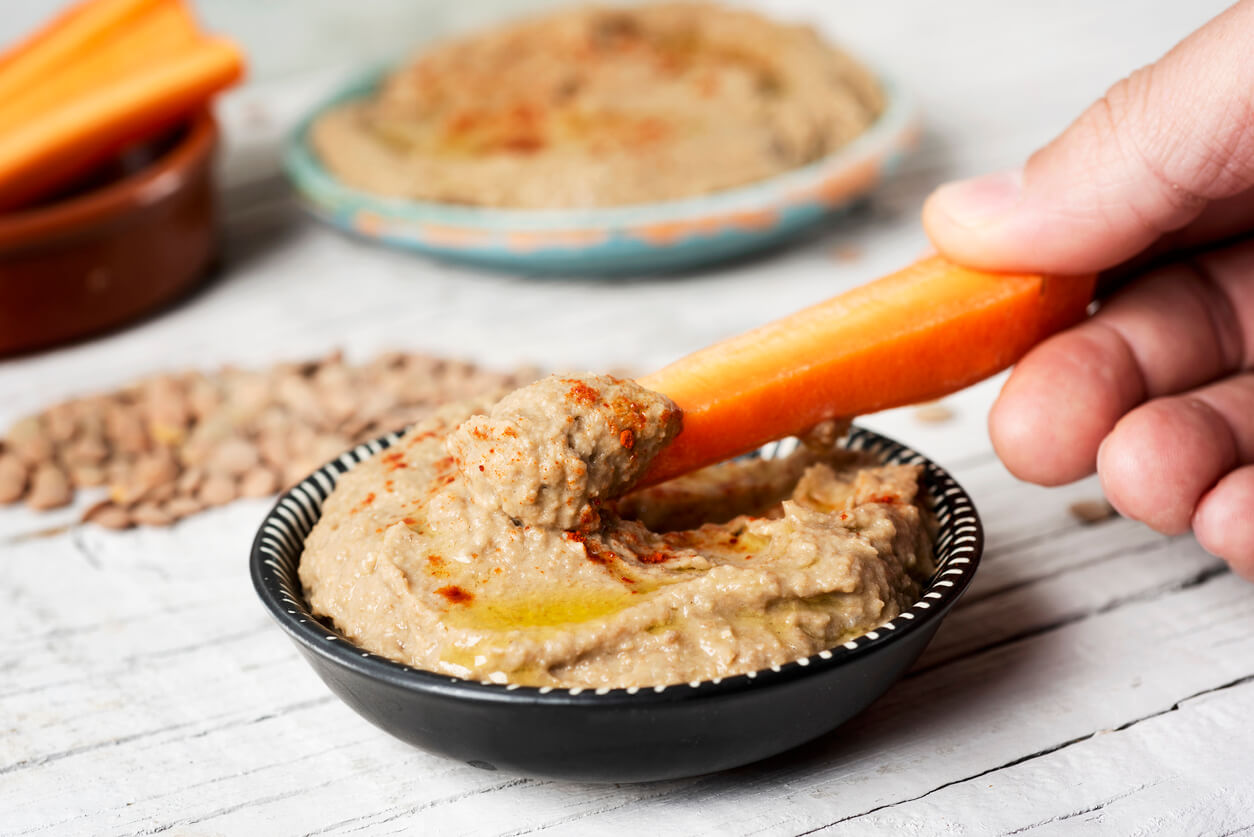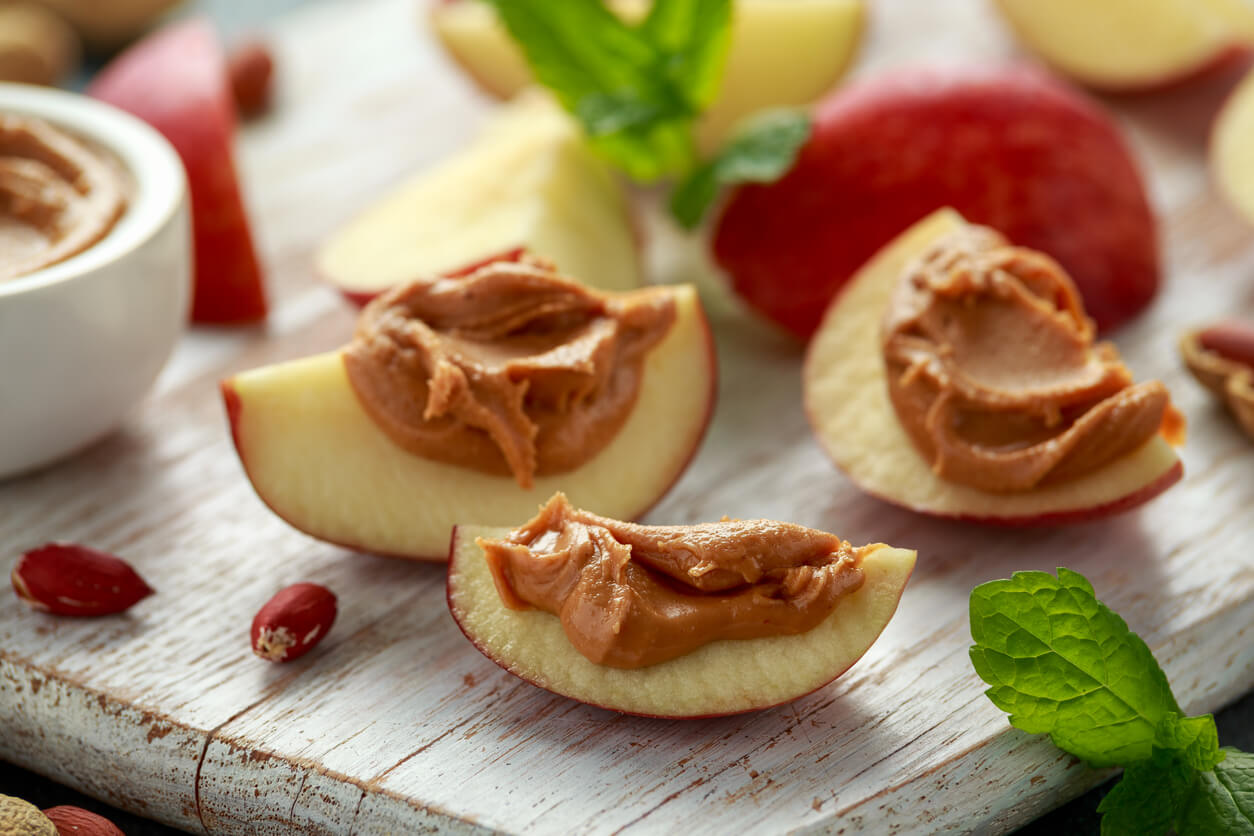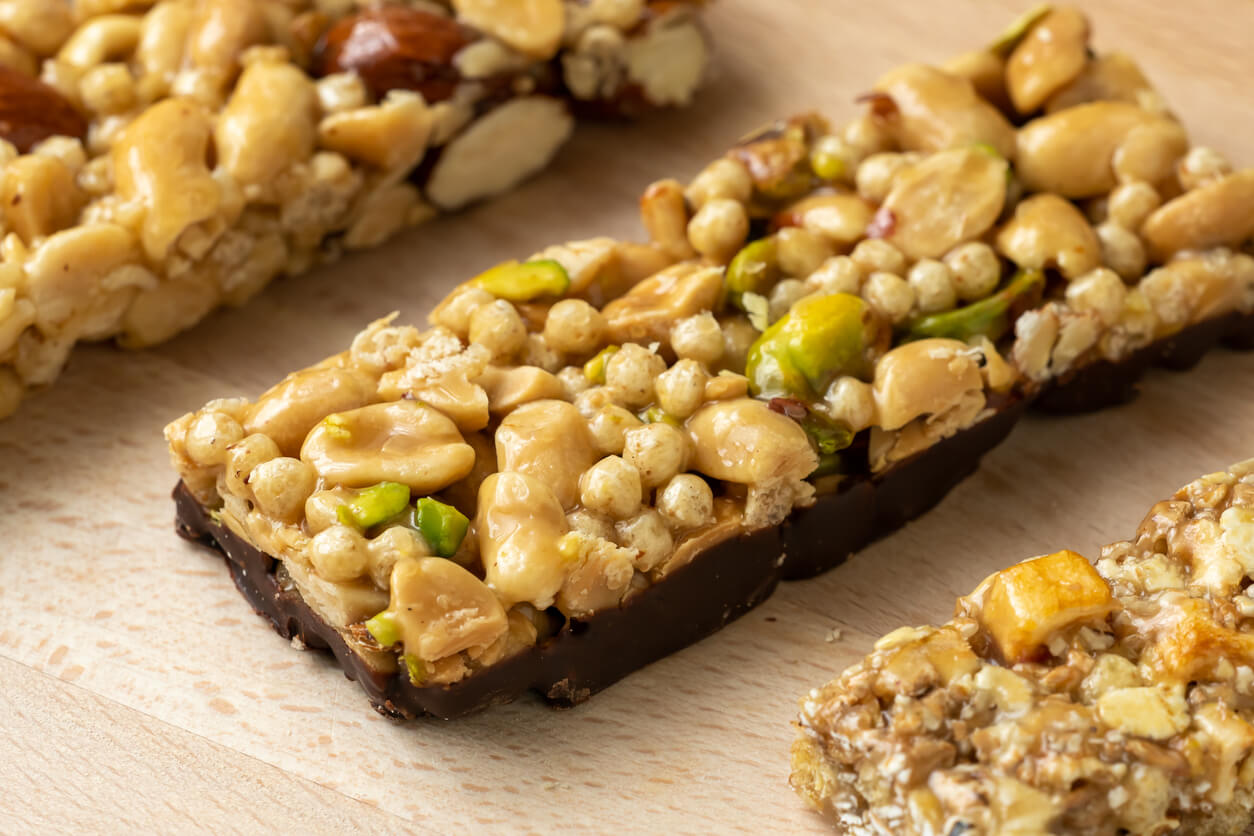3 Bread-Free Snacks for Children


Written and verified by the nutritionist Saúl Sánchez Arias
For your little ones, you can prepare bread-free snacks that will provide a significant amount of essential nutrients. These are healthy and will contribute to maintaining a good state of health, as long as they’re included in the context of a varied and balanced diet. Don’t miss out!
But, before we begin, we must emphasize that snack time is one of the critical meals of the day. However, we tend to include a large amount of poor quality ultra-processed foods in our children’s snacks. These foods are characterized by containing simple sugars and trans fats in them, so they increase the levels of inflammation in the internal environment.
Next, we’re going to show you the best bread-free snacks for children that you can prepare in a short time. That way, you’ll optimize the nutritional intake of children and ensure the good quality of their diet.
1. Red lentil hummus

Ingredients
- 3.5 ounces of dried red lentils
- 10 ounces of water
- 1 clove of garlic
- 1 tablespoon tahini
- 1/2 teaspoon cumin
- 1 tablespoon lemon juice
- 1 tablespoon olive oil and salt
Step-by-step instructions
- Cook the lentils in salted water for about 15 minutes, until tender.
- Let cool and mash with all the ingredients to make a thick paste.
- Add a little more water if a smoother consistency is desired.
- When it’s time to serve, we recommend providing some vegetable sticks for dipping.
Why make this recipe?
Hummus is capable of providing a high amount of fiber. We’re talking about a substance that has been shown to be decisive in taking care of intestinal function. In addition, it serves as an energetic substrate for the bacteria that live in the intestine and allows the formation of short-chain fatty acids with great anti-inflammatory power.
2. Apple and peanut butter bites

Ingredients
- 1 apple
- 1 tablespoon of peanut butter
- Cinnamon, raisins, and coconut or granola chips
Step-by-step instructions
- Remove the core from the apple and cut it into thick slices.
- Spread peanut butter on them.
- Top with cinnamon, raisins, or granola.
- Top with another apple slice to finish the bites.
Why make this recipe?
Peanut butter provides energy, but also a significant amount of quality nutrients. It helps to cover the daily protein requirements, which are key elements in your child’s development. In fact, an intake of more than 1.2 grams of protein per kilogram of body weight per day is necessary for regular exercise.
This is according to research published in the Journal of the International Society of Sports Nutrition.
3. Bars with almonds and chocolate

Ingredients
- 2 brown rice cakes
- 2 tablespoons of chopped toasted almonds
- A pinch of salt
- 1 tablespoon rice syrup
- 40 grams of dark chocolate
- 1 tablespoon almond butter
Step-by-step instructions
- Crumble the rice cakes with your hands to form crumbs.
- Mix with the almonds and a pinch of salt.
- Place rice syrup, chocolate, and almond butter in a small saucepan. Then, heat over low heat until all ingredients are well integrated.
- Combine the dry elements with the liquids.
- Pour everything into a plastic food container or tray lined with parchment paper and press well.
- Let cool for an hour, then cut the bars. They’re ready to eat!
Why make this recipe?
The energy bar options offered in the supermarket often contain an excessive amount of added sugars. However, you have the option of preparing them at home and controlling the ingredients used. That way, you can create a quality final product.
Prepare bread-free snacks for children
As you’ve seen, it’s easy to prepare different options of breadless snacks for children and thus achieve an adequate nutritional intake. It’s essential that you avoid products with additives or trans fats in them, as they could affect the normal functioning of the metabolism of the little ones.
For your little ones, you can prepare bread-free snacks that will provide a significant amount of essential nutrients. These are healthy and will contribute to maintaining a good state of health, as long as they’re included in the context of a varied and balanced diet. Don’t miss out!
But, before we begin, we must emphasize that snack time is one of the critical meals of the day. However, we tend to include a large amount of poor quality ultra-processed foods in our children’s snacks. These foods are characterized by containing simple sugars and trans fats in them, so they increase the levels of inflammation in the internal environment.
Next, we’re going to show you the best bread-free snacks for children that you can prepare in a short time. That way, you’ll optimize the nutritional intake of children and ensure the good quality of their diet.
1. Red lentil hummus

Ingredients
- 3.5 ounces of dried red lentils
- 10 ounces of water
- 1 clove of garlic
- 1 tablespoon tahini
- 1/2 teaspoon cumin
- 1 tablespoon lemon juice
- 1 tablespoon olive oil and salt
Step-by-step instructions
- Cook the lentils in salted water for about 15 minutes, until tender.
- Let cool and mash with all the ingredients to make a thick paste.
- Add a little more water if a smoother consistency is desired.
- When it’s time to serve, we recommend providing some vegetable sticks for dipping.
Why make this recipe?
Hummus is capable of providing a high amount of fiber. We’re talking about a substance that has been shown to be decisive in taking care of intestinal function. In addition, it serves as an energetic substrate for the bacteria that live in the intestine and allows the formation of short-chain fatty acids with great anti-inflammatory power.
2. Apple and peanut butter bites

Ingredients
- 1 apple
- 1 tablespoon of peanut butter
- Cinnamon, raisins, and coconut or granola chips
Step-by-step instructions
- Remove the core from the apple and cut it into thick slices.
- Spread peanut butter on them.
- Top with cinnamon, raisins, or granola.
- Top with another apple slice to finish the bites.
Why make this recipe?
Peanut butter provides energy, but also a significant amount of quality nutrients. It helps to cover the daily protein requirements, which are key elements in your child’s development. In fact, an intake of more than 1.2 grams of protein per kilogram of body weight per day is necessary for regular exercise.
This is according to research published in the Journal of the International Society of Sports Nutrition.
3. Bars with almonds and chocolate

Ingredients
- 2 brown rice cakes
- 2 tablespoons of chopped toasted almonds
- A pinch of salt
- 1 tablespoon rice syrup
- 40 grams of dark chocolate
- 1 tablespoon almond butter
Step-by-step instructions
- Crumble the rice cakes with your hands to form crumbs.
- Mix with the almonds and a pinch of salt.
- Place rice syrup, chocolate, and almond butter in a small saucepan. Then, heat over low heat until all ingredients are well integrated.
- Combine the dry elements with the liquids.
- Pour everything into a plastic food container or tray lined with parchment paper and press well.
- Let cool for an hour, then cut the bars. They’re ready to eat!
Why make this recipe?
The energy bar options offered in the supermarket often contain an excessive amount of added sugars. However, you have the option of preparing them at home and controlling the ingredients used. That way, you can create a quality final product.
Prepare bread-free snacks for children
As you’ve seen, it’s easy to prepare different options of breadless snacks for children and thus achieve an adequate nutritional intake. It’s essential that you avoid products with additives or trans fats in them, as they could affect the normal functioning of the metabolism of the little ones.
All cited sources were thoroughly reviewed by our team to ensure their quality, reliability, currency, and validity. The bibliography of this article was considered reliable and of academic or scientific accuracy.
- Gill SK, Rossi M, Bajka B, Whelan K. Dietary fibre in gastrointestinal health and disease. Nat Rev Gastroenterol Hepatol. 2021;18(2):101-116. doi:10.1038/s41575-020-00375-4
- Jäger R, Kerksick CM, Campbell BI, et al. International Society of Sports Nutrition Position Stand: protein and exercise. J Int Soc Sports Nutr. 2017;14:20. Published 2017 Jun 20. doi:10.1186/s12970-017-0177-8
This text is provided for informational purposes only and does not replace consultation with a professional. If in doubt, consult your specialist.








